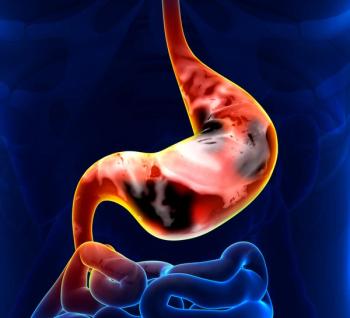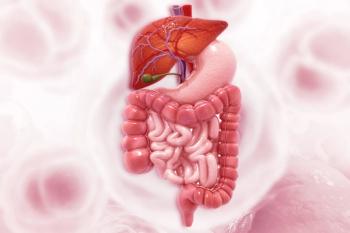
Oncology NEWS International
- Oncology NEWS International Vol 10 No 5
- Volume 10
- Issue 5
Possible Link Between Diet and Colon Cancer Remains Unclear
BETHESDA, Md-Evidence of a relationship between diet and the origins of colorectal cancer is tantalizing but shadowy, two longtime researchers said at the Colorectal Cancer Prevention and Treatment conference, co-sponsored by the Cancer Research Foundation of America and the American Digestive Health Foundation.
BETHESDA, MdEvidence of a relationship between diet and the origins of colorectal cancer is tantalizing but shadowy, two longtime researchers said at the Colorectal Cancer Prevention and Treatment conference, co-sponsored by the Cancer Research Foundation of America and the American Digestive Health Foundation.
"Nutritional factors associated with adenoma formation are likely important in the development of cancer, but there is much uncertainty," said Arthur Schatzkin, MD, DrPH, chief of the Nutritional Epidemiology Branch of the National Cancer Institute.
It is unreasonable to expect one single factor to explain the relationship between diet and colon cancer, warned Edward Giovannucci, MD, ScD, of the Harvard School of Public Health. "The old high-fat, low-fiber hypothesis for colorectal carcinogenesis is too simplistic," he said.
That long-standing hypothesis, Dr. Schatzkin said, focuses on dietary elements that are presumed to increase riskfat, meat (especially red and processed meats), high-temperature cooking, sugar, and alcoholand those that are thought to decrease riskvitamins (especially A, D, and folic acid), minerals (calcium and selenium), fiber, and fruits and vegetables.
Trials with APC knockout mice, which are genetically engineered to produce intestinal adenomas, have shown that a low-fat, high-fiber diet produces a 36% reduction in small, intestinal polyps, Dr. Schatzkin said. Comparisons with humans are not simple, but this dietary intervention study does demonstrate that dietary manipulation can interfere with the carcinogenic processes.
Observational studies in humans, he said, have shown increased relative risk for total fat (2.3) and for red meat vs chicken and fish (1.8), and protection by fiber (0.4) and vegetables (0.5), for highest vs lowest quintiles. But findings diminish with time, and prospective studies show less effect, especially for fiber. The problem with observational studies is that multiple other factorsnot just dietmay confound the effect.
As an example, he cited the Polyp Prevention Trial he carried out with Elaine Lanza, PhD, a decade ago. They hypothesized that a low-fat diet, high in fiber and fruits and vegetables, would decrease the recurrence of colorectal adenomas. Their targets were fat as 20% of total energy intake; 18 g/1,000 kcal of fiber daily; and 5 to 8 servings of fruits and vegetables daily.
Drs. Schatzkin and Lanza randomized 2,000 patients who had had at least one polyp removed into two groups, one with the usual diet and one with the intervention diet and intensive nutritional counseling. The latter included recipe development, newsletters, social events, and a "fruit- and veg-a-thon." Colonoscopy was performed at entry and again after 1 year and 4 years.
The intervention group did lower their fat intake by one third and increased fiber by three fourths and fruit and vegetables by two thirds, he said, and 90% completed the 4-year trial. The result? "After 10 years of work and the expenditure of much money," Dr. Schatzkin said, "there was no difference in the recurrence rate, and only a hint of reduction in the largest adenomas."
These results are open to varying interpretations, he said. They may mean that dietary change, in fact, has no effect. But it could be that a longer intervention time might result in a greater observable effect. Or perhaps diet has its effects on colorectal cancer earlier or later in the process. Or possibly a more radical diet is called for, one that more explicitly cuts down on red meat, for instance.
Dr. Giovannucci pointed out that many of the risk factors for colon cancerreduced physical activity, increased simple carbohydrate, fat, and saturated fat intake, and higher polyunsaturated-to-saturated fat ratioare also important in diabetes. "I suspect the factors we are looking for are not luminal but systemic, such as insulin or an insulin-like growth factor," he said.
Insulin and insulin-like growth factor (IGF) enhance cell proliferation and inhibit apoptosis, he said. In animal models, direct injection of insulin increases tumor growth, as do hypercaloric diets. However, insulin resistance also increases tumor promotion. "No matter how you affect insulin resistance, it affects the tumors," he said.
Similar trials cannot be carried out on humans, Dr. Giovannucci said, but one can look at clinical conditions like diabetes or at plasma markers like post-meal insulin, fasting insulin, C-reactive peptide, IGF binding protein-2 (IGFBP-2), and triglycerides. IGF binding proteins reduce the activity of IGF-1, so high levels of IGFBP-1, which is determined by insulin levels, may reduce the risk of colon cancer, he said.
Three published studies, he said, show that higher insulin levels predict colorectal cancer risk. However, this correlation is not simple. "Insulin levels are tied to lifestyle issues. Diet is important but is not the only issue. Someone who is overweight and inactive will have increased post-meal insulin levels," he said.
More than 50 studies have shown an inverse risk of colon cancer with physical activity, both leisure and occupational, in both men and women, across a variety of populations. "Walking 3 hours a week appears to have a major impact on development of the disease," he said.
Red meat may have a direct, deleterious effect on insulin resistance or may be a marker for other dietary patterns. The polyunsaturated-to-saturated fat ratio is also an important determinant of insulin resistance. "Fiber may be important, but the question is, how important?" Dr. Giovannucci asked. "We have to look at a constellation of factors."
So what does the conscientious physician say about this welter of factors to an inquiring population? "Risk reduction is a matter of total lifestyle," Dr. Giovannucci said. "Start with increased physical activity. Cut down on red meats, and increase your intake of fruits and vegetables. There may be a lifetime impact on risk that is hard to discern in the short term."
Articles in this issue
over 24 years ago
Adjuvant Chemo Dose Reductions Frequent in Breast Cancerover 24 years ago
Women May Be at Greater Risk for Undertreatment of Cancer Painover 24 years ago
Umbilical Cord Blood in Adult Leukemia Patientsover 24 years ago
Irinotecan Results Continue to Be Encouraging in Colorectal Cancerover 24 years ago
Irinotecan Active in Pediatric Cancersover 24 years ago
Ultrasound Contrast Agents Help Diagnose Prostate Cancerover 24 years ago
Optimal Use of Irinotecan Still to be Determinedover 24 years ago
Groups Urge Federal Action Against Eclipse Cigarettesover 24 years ago
Potential Advantages of Oral Irinotecan Defined in Phase I StudiesNewsletter
Stay up to date on recent advances in the multidisciplinary approach to cancer.

















































































